19. THE SETTLING IN OF THE COLD WAR

THE JOHNSON (LBJ) ERA
CONTENTS
 Johnson – the Washington insider Johnson – the Washington insider
 Johnson's "Great Society" Program Johnson's "Great Society" Program
 The Black-Power Movement The Black-Power Movement
 Johnson's "Police Action" in Vietnam to Johnson's "Police Action" in Vietnam to
stop Communism's spread
The textual material on page below is drawn directly from my work
A Moral History of Western Society © 2024, Volume Two, pages 300-304.
JOHNSON – THE WASHINGTON INSIDER |
With
Vice President Lyndon B. Johnson (LBJ) now taking office as U.S.
President, Kennedy's international sophistication will be replaced by
Johnson's air of Texas "good-old-boy" plainness. But there was
nothing plain about LBJ … having been chosen as the Democratic Party's
Senate Minority Leader in 1953 (at 44, the youngest ever to hold that
powerful position) and then, with the Democratic Party election victory
in 1954, the Senate Majority Leader – the most powerful man in the
Senate … holding that position all the way up to his installation as
Kennedy's Vice President in early 1961. But as Vice President, he
had played only a minimal political role (the Kennedys actually did not
like him very much). But now, with Kennedy's death, he was U.S.
President. And he was determined to show America what a Real
President was capable of!
JOHNSON'S "GREAT SOCIETY" PROGRAM |
What
Johnson lacked in charisma he more than made up for in political skill
– quite able to get the Democratic-Party majority in Congress to follow
his lead … the way Kennedy as President was never able to
achieve. But he was not only powerful, he had a very strong
caring heart for the poor (having been brought up in tough
circumstances himself) … and planned to use all the power he had in
Washington to see "progressive" social programs put into action.
He
had also been brought into the world of politics – and was shaped
deeply by Roosevelt's New Deal. He understood extensive
government management of American society as government's proper role …
although a very prosperous America of the 1960s was going through none
of the social emergencies that supposedly had justified the New Deal's
takeover of much of the country's social dynamics in the 1930s ... or
the Federal government's commanding role during the years of World War
Two. But from his point of view, there was still much work to be
done to bring America to perfection as a social model to the larger
world. Washington had a lot of work to do to get things to just
such perfection.
And his wife "Lady Bird" was determined by her
own Southern aristocratic instincts to turn the rather humble American
capital city into something of a great metropolis, on the order of
London, Paris, Rome, Vienna, etc. Under the Johnsons, DC was to
become a culturally majestic as well as a politically powerful city …
more appropriate to its position as the leader of the Free World.
Thus
it was that on 22 May 1964, addressing a University of Michigan
graduating class, Johnson announced the basic design of what was to be
his Great Society Program. The program was intended not only to
end all poverty and racial injustice in America – but to improve
America's educational and professional development; to protect its
natural beauty from pollution, overcrowding and loss of fields and
forests; and to shape America's rapidly developing urban life …
offering housing for all, improved urban infrastructure, and
enhancement of a urban cultural growth – even the promotion of a spirit
of urban community-mindedness.
And how was he going to do
this? In the speech he claimed that he did not intend to make
this a matter of federal government programming … but a social movement
that would build itself on the support of cities and states all across
the nation.
The only problem with this grand approach was that
while Johnson commanded great power in DC, he had no such influence out
in those very cities and states. Consequently, he had to have
known at the time he made this promise that in fact it would be the DC
government that would be given the responsibility to see his programs
put into action. And this was going to require an enormous
expansion of DC's bureaucratic infrastructure to make this happen.
And
indeed, DC's population (especially in the realm of the legal
profession) expanded enormously … and very quickly. Washington
was taking command in America's development as a Great Society. |
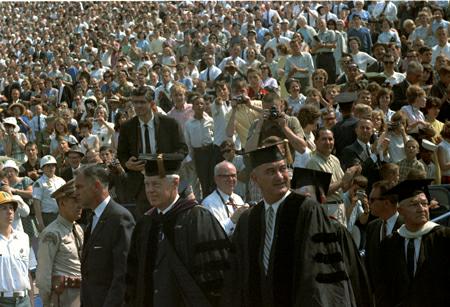
LBJ at the University of
Michigan, May 22, 1964 – announcing the outline of
his "Great Society" Program
LBJ Library - University
of Texas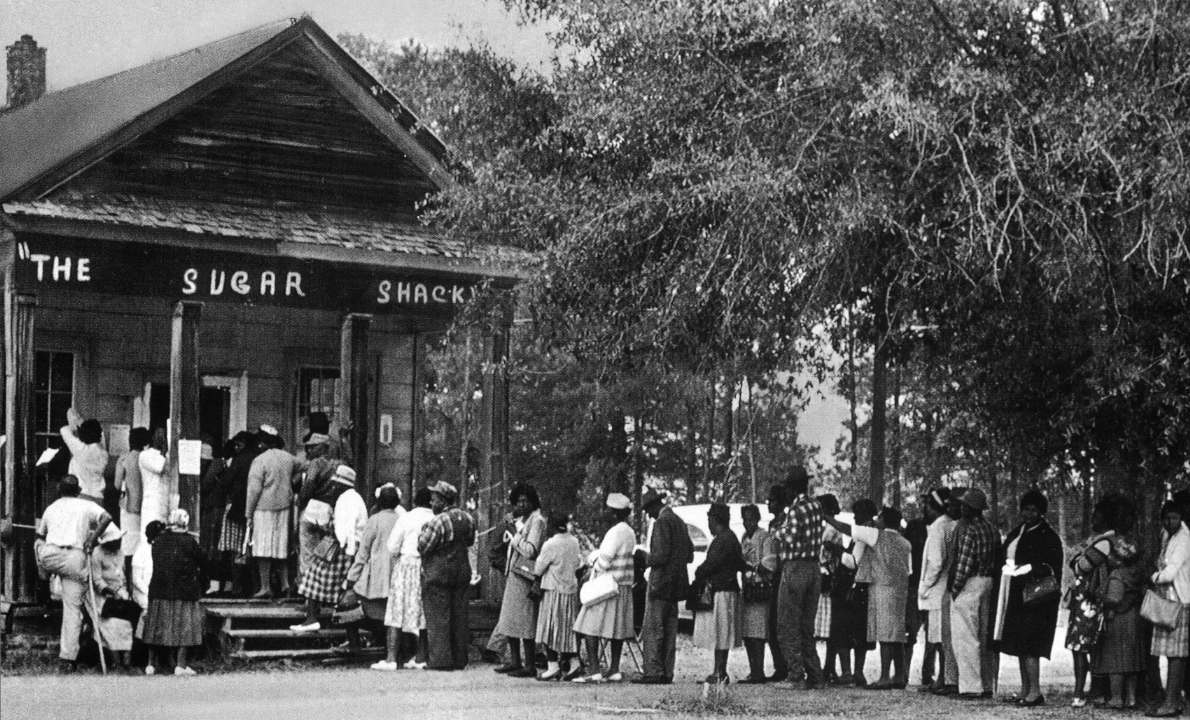
Blacks lining up for the
vote in rural Peachtree, Alabama – May 3, 1966
Another
development that would shake America deeply was the growth of a very
militant Black power "revolution of rising expectations" … in
particular the more active of the movement that identified themselves
as the "Black Panthers." Despite the quite visible progress in getting
a much more affirmative pro-Black cultural shift underway, the progress
was never fast enough for young Blacks for whom expectations for social
equality were that it was to take place immediately … something that
was guaranteed not to happen. In response, their anger against White
society produced a rapidly rising incidence of urban violence … attacks
on White (or Asian) businesses located in their neighborhoods,
attacking, pillaging and burning them with great abandon – as if it
constituted some right of theirs to enact such "justice" against White
society. Thus to the tune of police and fire engine sirens rushing to
burning inner-city Detroit or Newark or Watts could be heard the Black
Panther refrain, "burn baby, burn"!
Of course this merely made
the social conditions in such Black communities much worse … as gangs
rose quickly to allow young Black males to get on the "right" side of
such local dynamics. Consequently, the murder rate in Black urban
America skyrocketed to new heights.
Tragically, the "White
guilt" experienced by more "socially-enlightened" Whites led them to
form an unusual political alliance with these young Black
revolutionaries1
– making it even harder to bring some kind of social order to the
social disorder that descended on Black urban societies in the
mid-1960s … not even when things got worse in these neighborhoods –
much, much worse.
1Malcolm-X,
LeRoi Jones, H. Rap Brown, Ron Karenga, Bobby Seale, and Stokely
Carmichael became prominent national figures as a result of the
development of the Black Power Movement.
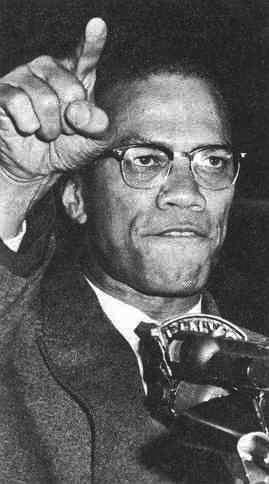 Malcolm X,
1925-1965
Malcolm X,
1925-1965
Blacks demonstrate their
new freedoms by torching the world around them (what exactly was the logic
in this behavior?)
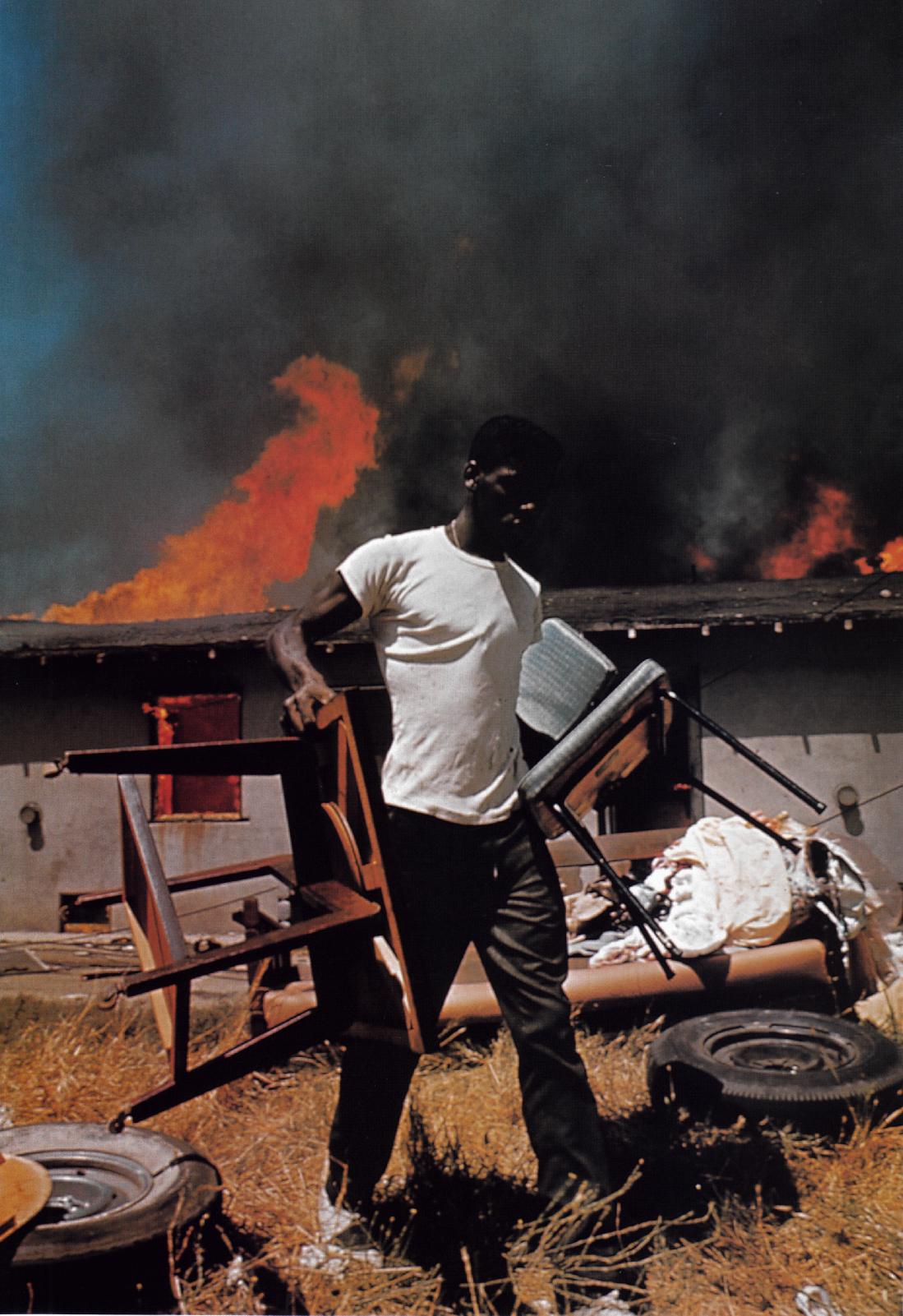
Rioting and arson in Watts
- 1965 (less than a week after the passing
of the Voting Rights Act)
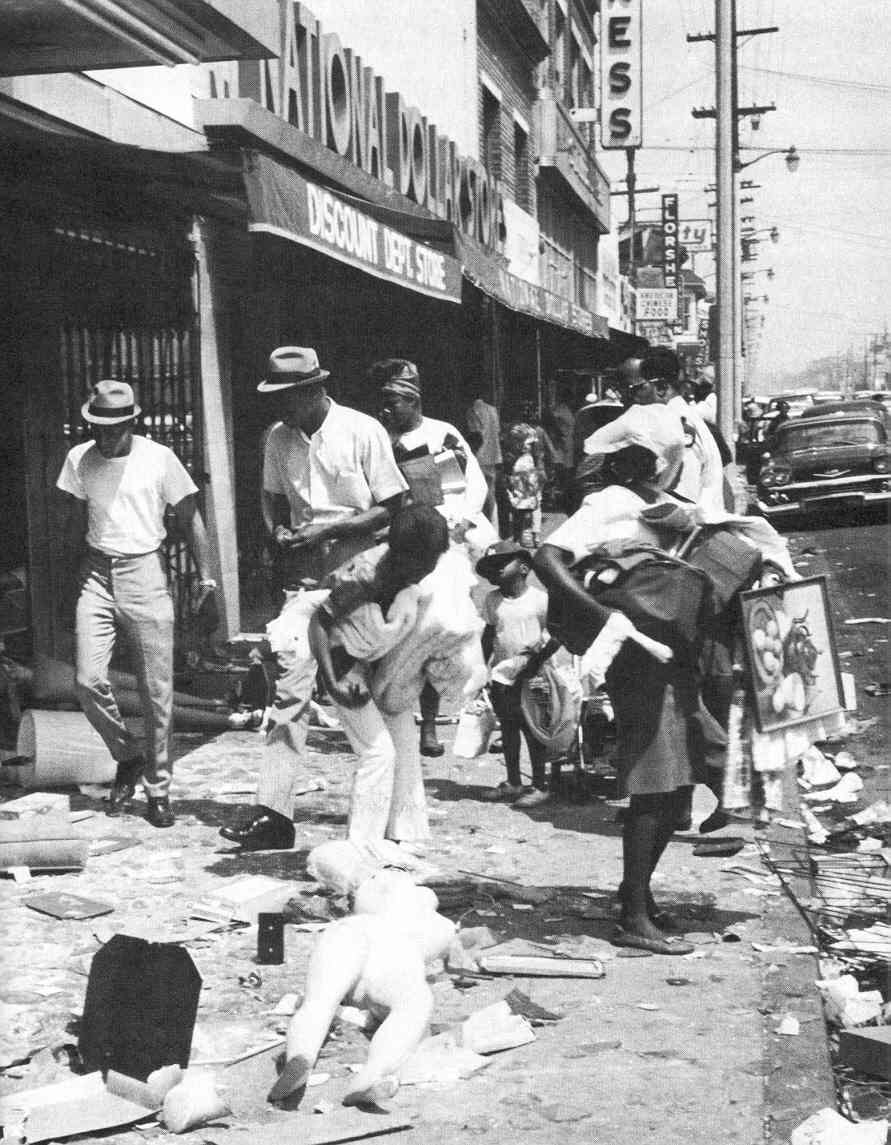
Black looters in the Watts
section of Los Angeles – August 1965
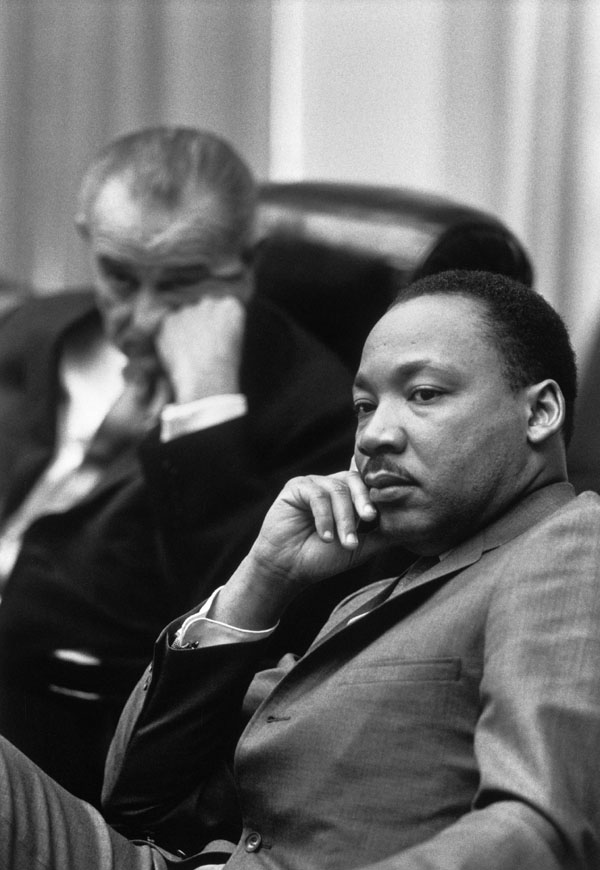
Rev. Martin Luther King,
Jr.; President Lyndon Johnson in background (the breakdown of social
order was not at all what either of them expected or wanted
the civil rights
movement to develop into)
By Yoichi Okamoto, Washington,
DC, March 18, 1966
Lyndon Baines Johnson Library,
National Archives
For many young Blacks, 1967
was yet another summer for looting and burning (giving rise to the new
mantra: "Burn baby, burn") 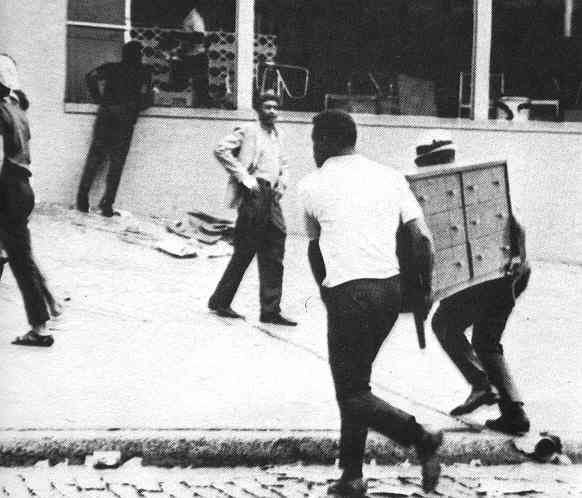 Looters in Newark's riots
– mid-July 1967
Looters in Newark's riots
– mid-July 1967
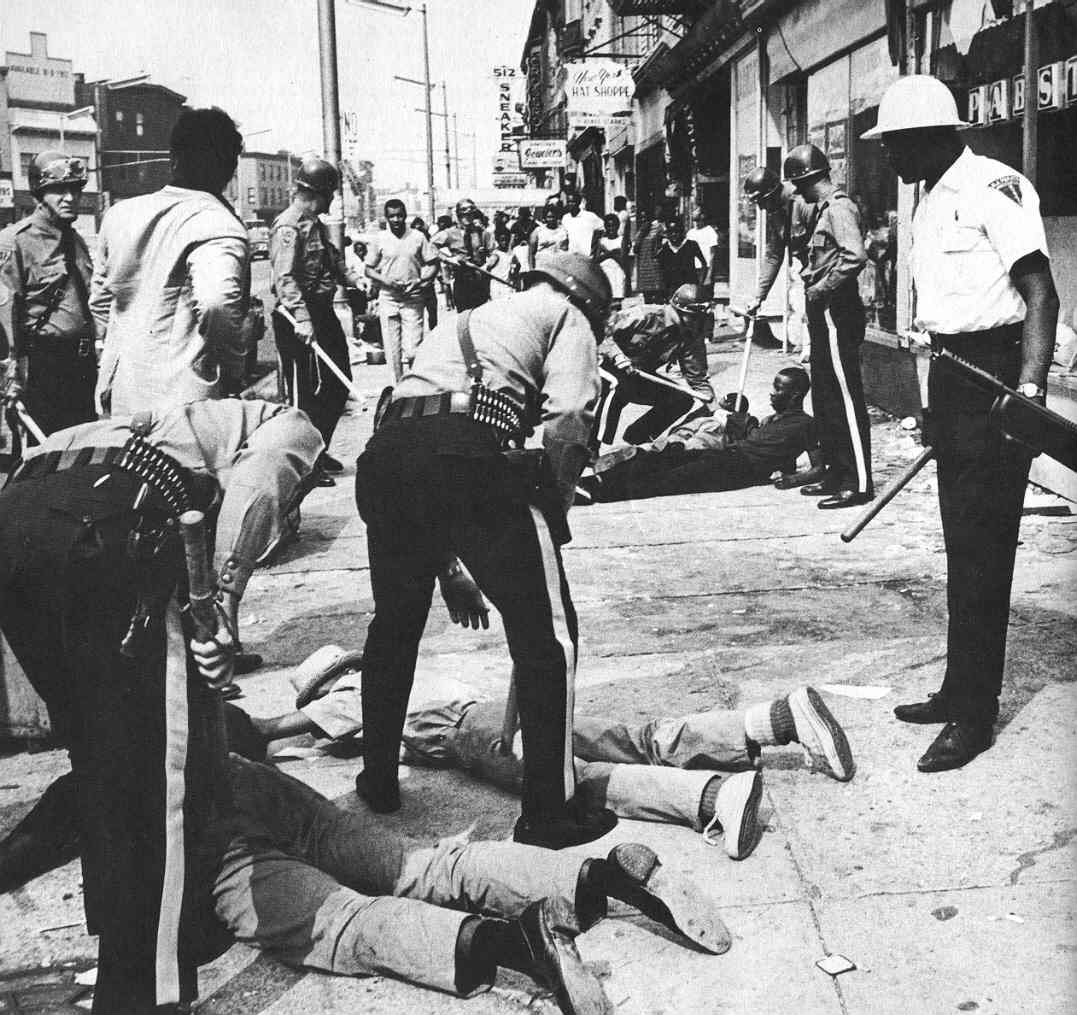
National Guardsmen and police
arresting looters in Newark's riots – mid-July 1967
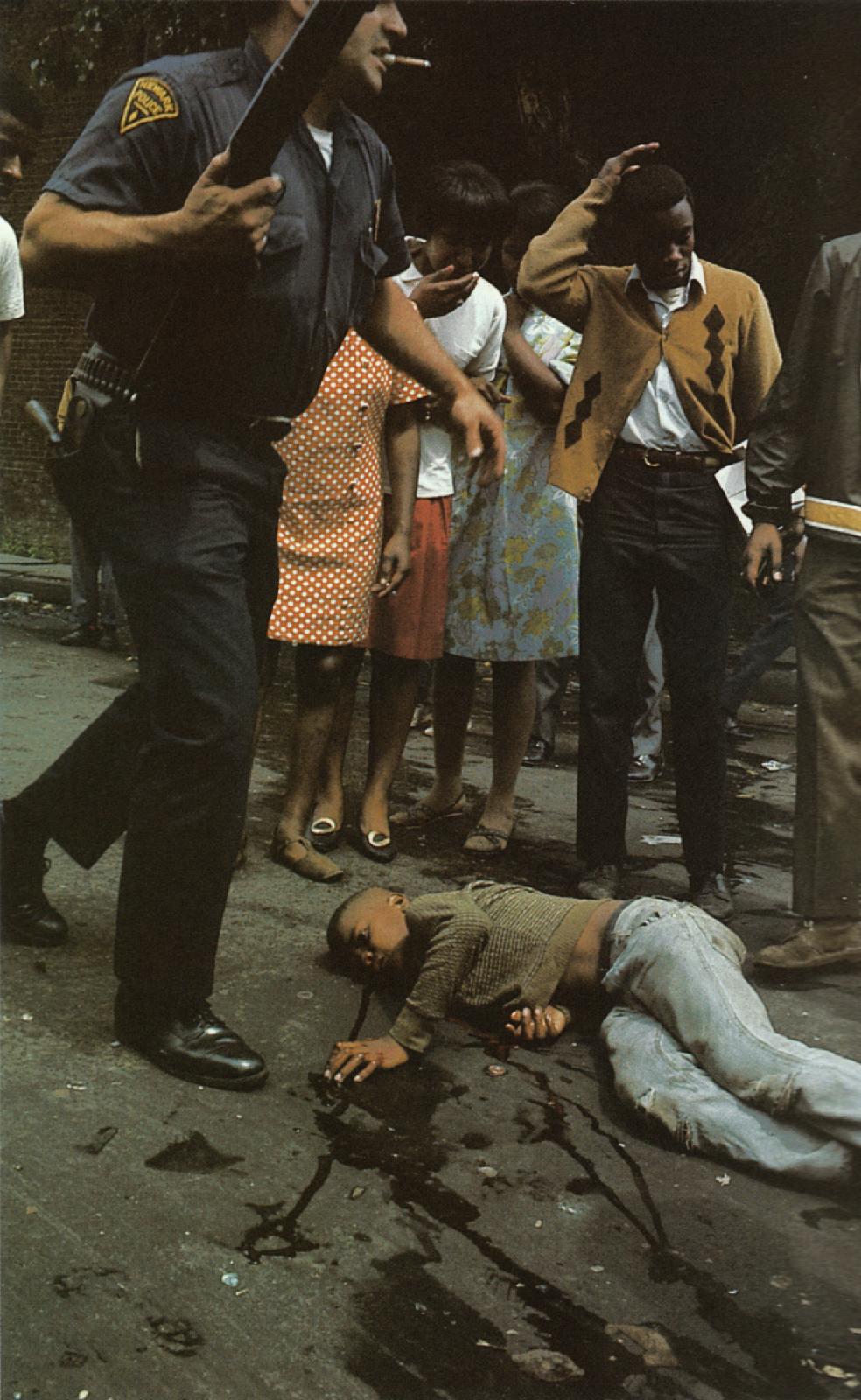
A boy wounded in the Newark
riots - 1967 (26 died)
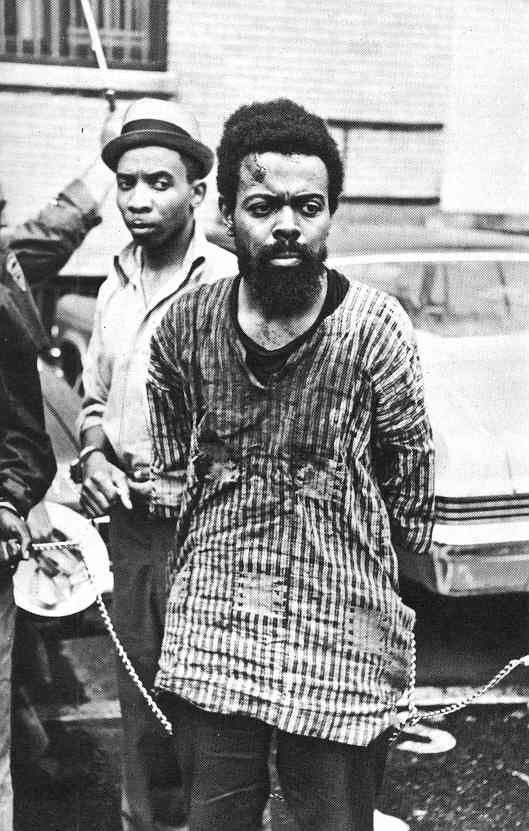
Playwright LeRoi Jones arrested
in Newark for possessing two loaded pistols – mid-July 1967
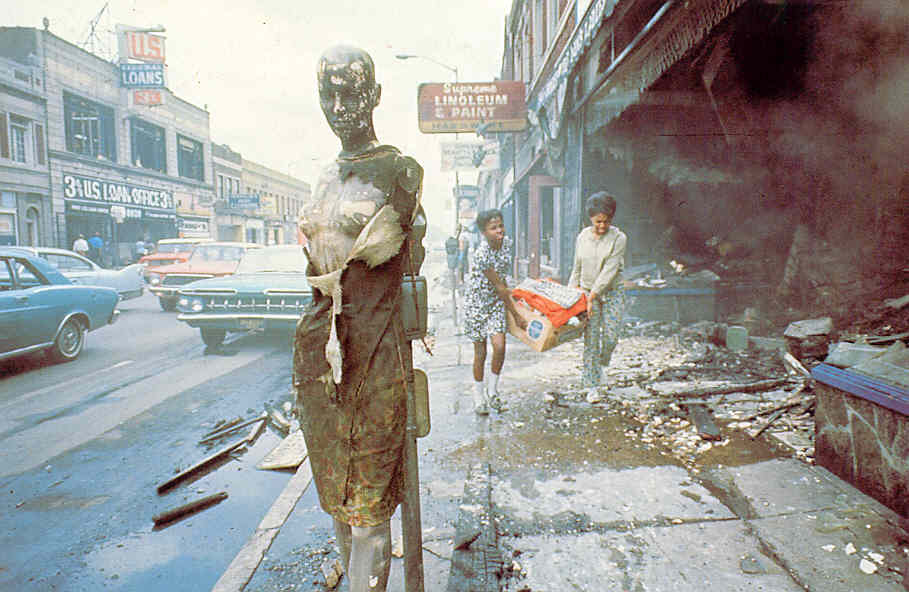
Detroit – 1967:
Black
summertime rioting and pillaging 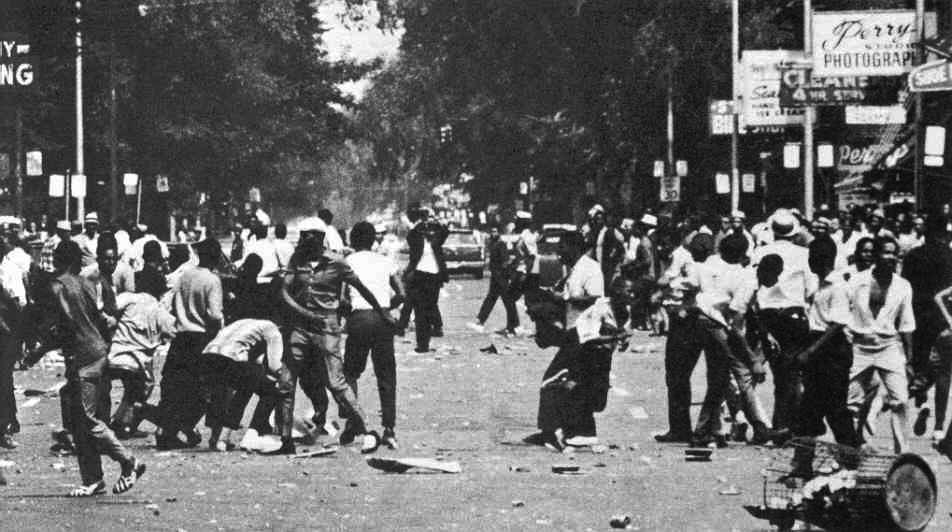
Blacks rioting in Detroit
– July 1967
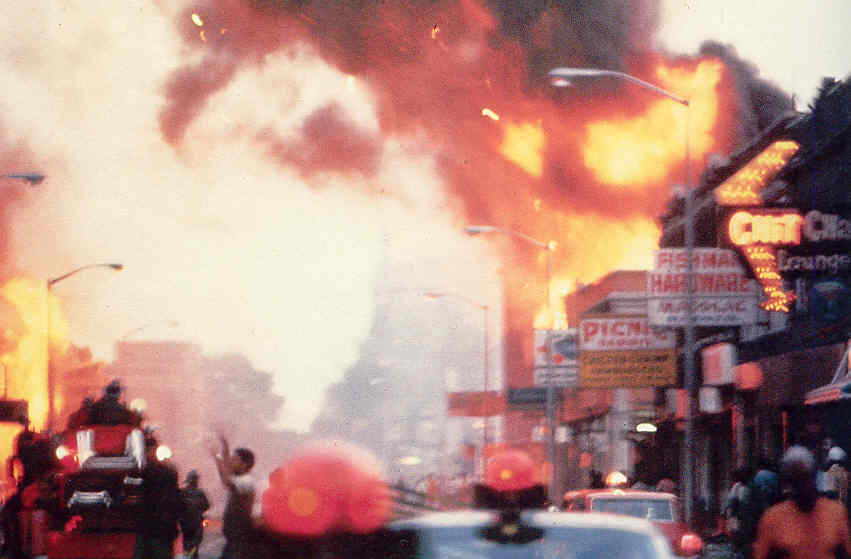
A Black district in Detroit
set afire – July1967.
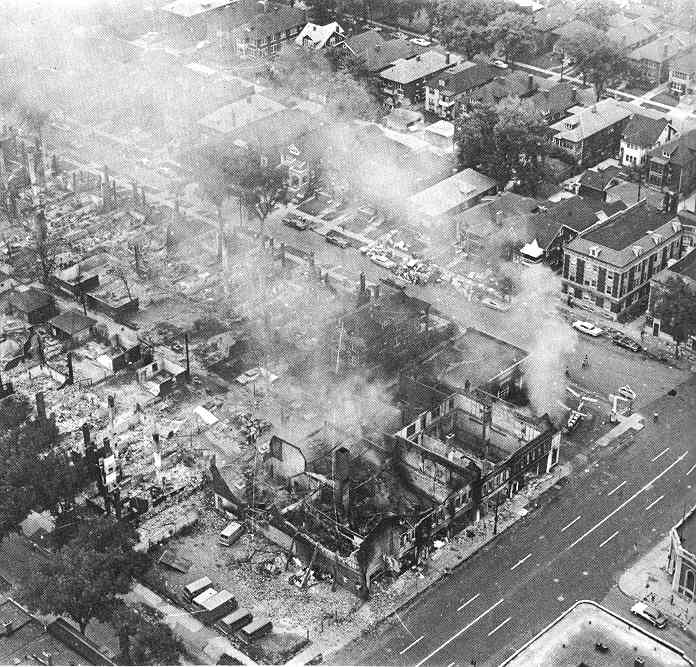
One of the many burned-out
sections of Detroit – late-July 1967
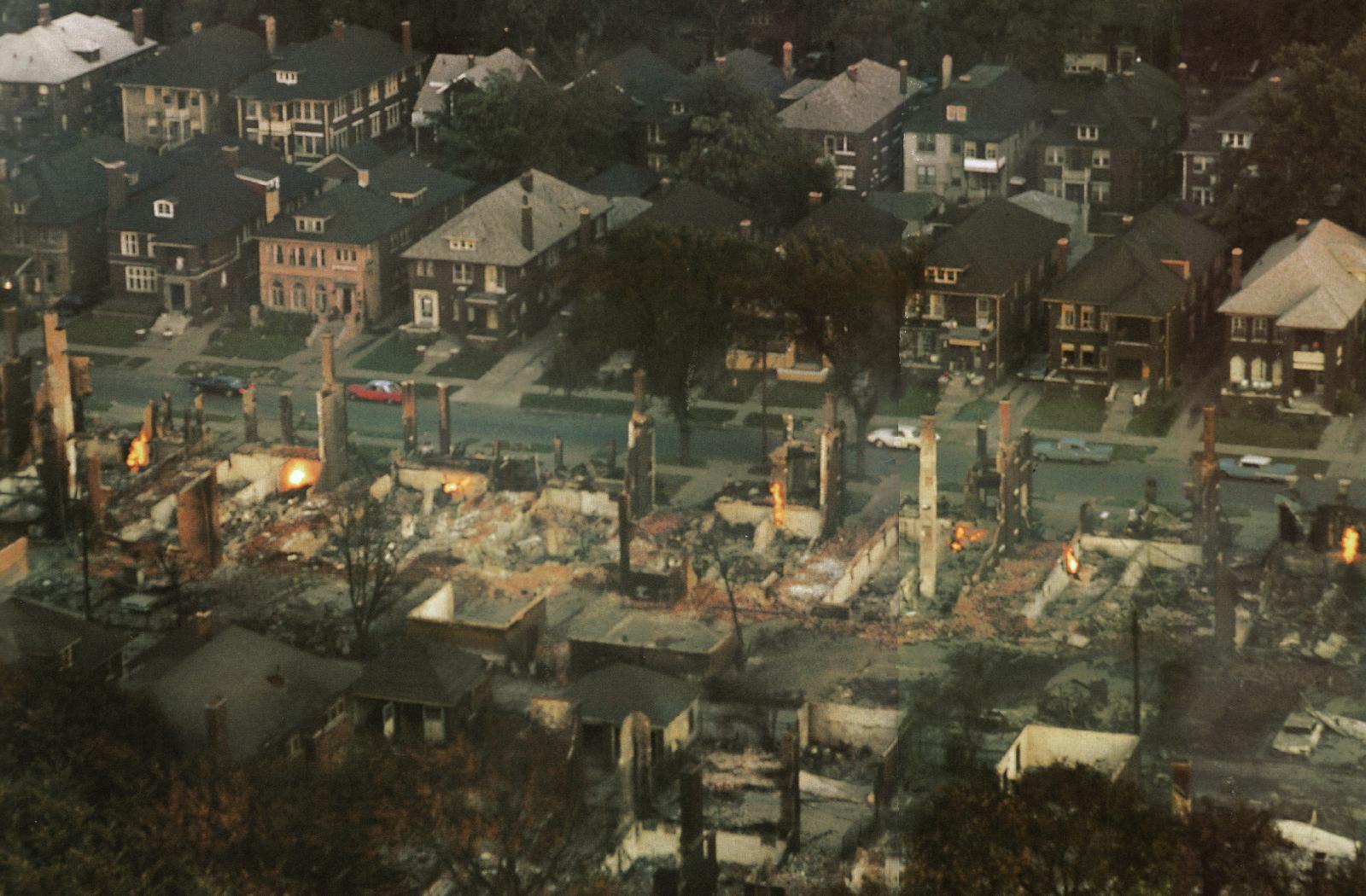
A burned out Black middle
class section of Detroit - 1967 (43 people died)
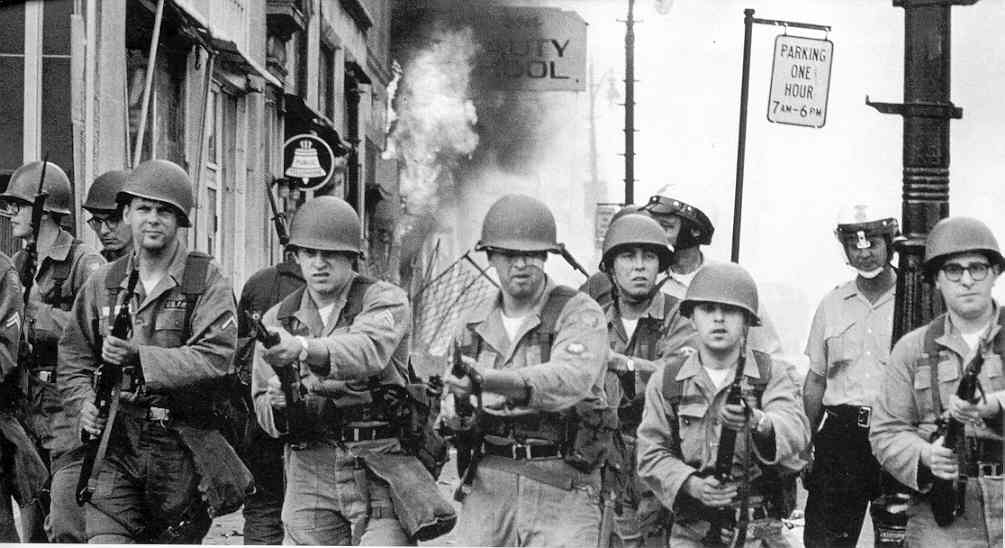
National Guardsmen in Detroit
– July 23, 1967
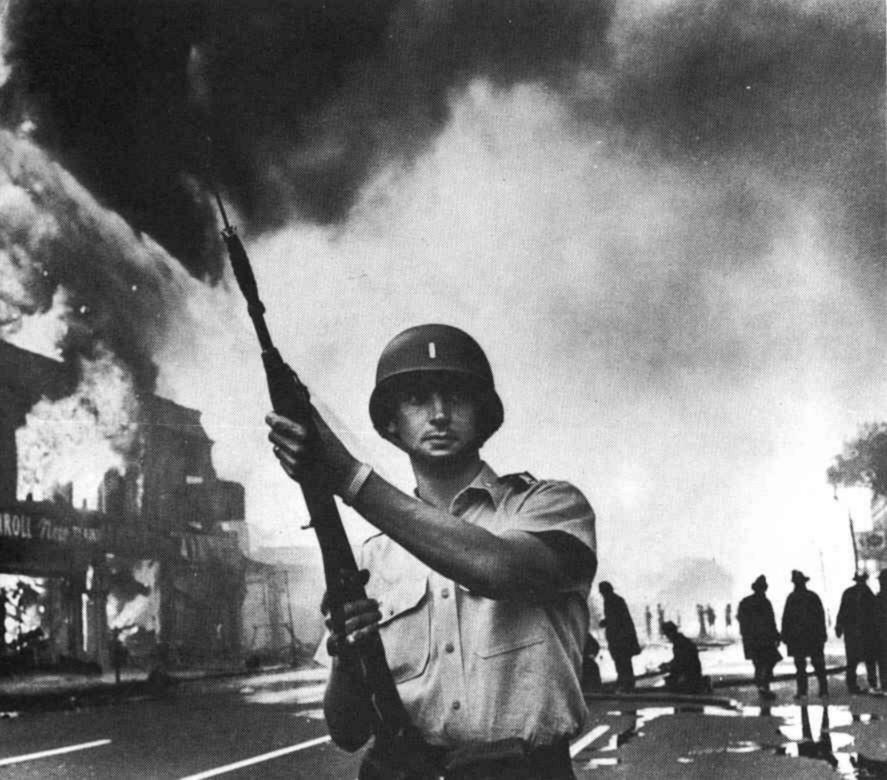
A National Guardsman standing
watch in Detroit as firemen battle blazes set by rioters – late-July
1967
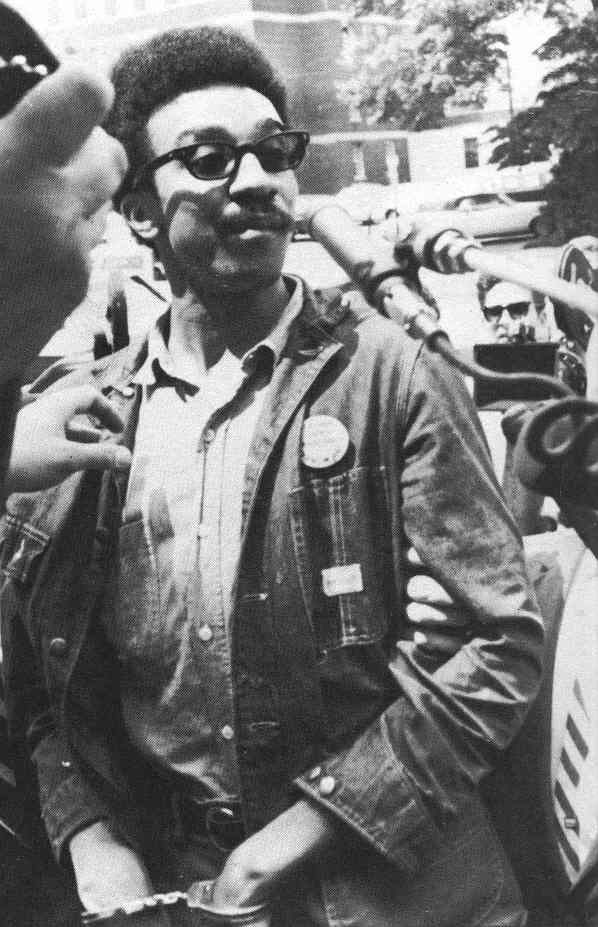
H. Rap Brown arrested for
inciting the Cambridge, MD riot – late-July 1967
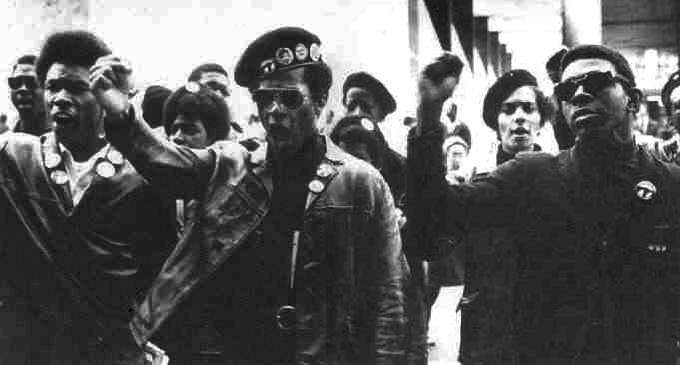 Black Panthers in a defiant
mood
Black Panthers in a defiant
mood
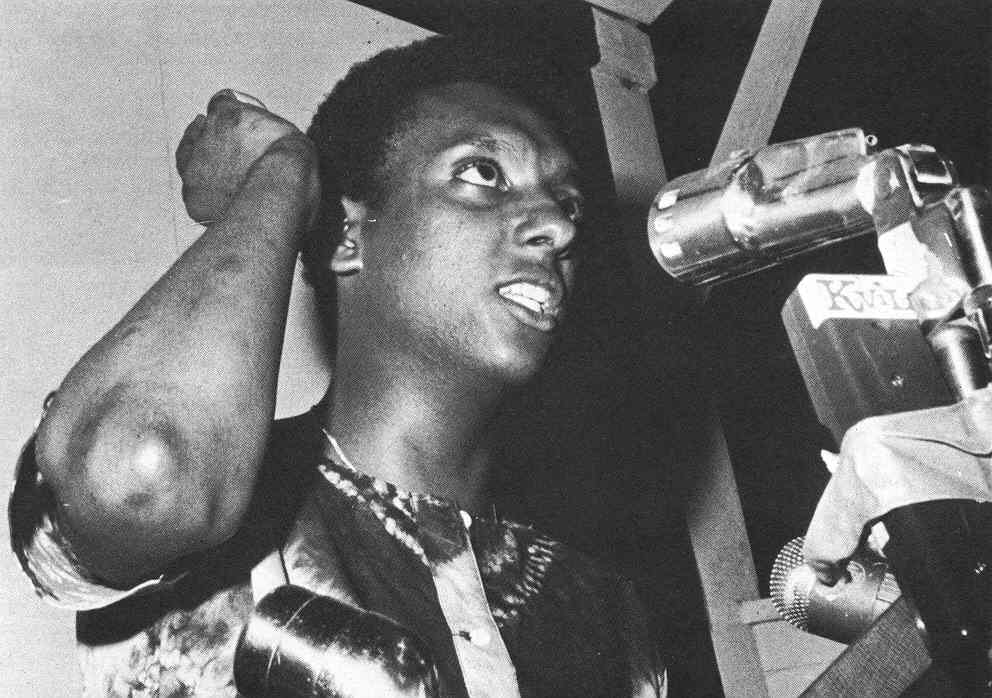
SNCC leader Stokely Carmichael
at a University of Texas gathering, denouncing US imperialism
JOHNSON'S "POLICE ACTION" IN VIETNAM TO STOP COMMUNISM'S SPREAD |
As
far as foreign policy went for Johnson, the single, all-absorbing issue
was the Vietnam mess he inherited when he became president. And
his response to that challenge paralleled his approach to American
politics at home: when you need to get something done, simply hit
it hard. Thus to Johnson the issue was quite
straightforward: increase the American military presence in South
Vietnam to the level needed to simply defeat the Communist Viet Cong.
Somehow
it never occurred to Johnson that the situation was in fact quite
complex. And he was oblivious to the fact that no matter what
America chose to do, it had better be focused on achieving one
goal: getting the South Vietnamese population to support the
American effort. Otherwise, no matter what America did, it would
have no lasting quality … unless America was planning to undertake full
control of South Vietnamese society – like the European colonial powers
before them had held their positions in Asia. In other words,
this was not really about bringing democracy to a foreign land.
It was about making sure that this foreign land never fell under the
sway of Communism. Period.
But to get Congress on board in
support of his intended response to the Vietnam situation, he was going
to need something dramatic to happen to muster such Congressional
support. That finally came when he was able to report two
incidents occurring in early August 1964 when American destroyers were
fired on by North Vietnamese at the Gulf of Tonkin. [Actually, only one
of these reported incidents was partially true; the second never
happened at all.] This demanded a full response. And Johnson got
his needed Resolution from Congress to take whatever action was
necessary to protect any of the countries of the region from Communist
aggression.
A very serious mistake he then made was in selling
his military response in Vietnam as simply a "police action" … not
full-out war – as what recently happened in Korea. But
nonetheless, he would be sending American boys off to fight a war –
without having the national consensus to make their sacrifices seem
worthy of the cause.
Yet another mistake he (and his military
advisors) made was nonetheless to go at this the way America had gone
at the Korean challenge. It all seemed quite clear looking at a
map of Vietnam that the object of the "police action" was to unload
American troops at various points along the coast of South Vietnam's
long but narrow profile – and then branch out from there until they had
brought the entire country under American military command.
The
only problem with this very conventional military approach was that the
Viet Cong wore no military uniforms … and thus were indistinguishable
from the people American soldiers were trying to save from Communism.
Thus, beginning in March of 1965, as they moved forward from their
beachheads, supposedly securing village after village, American troops
soon found themselves being shot at from behind … by what they
previously had supposed were friendly Vietnamese. Gradually it
dawned on the American troops that they in fact had secured nothing at
all in this conventional military sweep.
In the end they
simply set up military camps here and there in the land, ventured out
from there upon occasions to shoot at supposed Communist guerrillas …
then return to camp. And this would be the profile that would
literally never change over the coming years of American involvement in
Vietnam.
Faced with this disappointing result, Johnson simply
upped the number of American boys drafted and sent to Vietnam to kill
Communist guerrillas … until by early 1968 there were over a
half-million American troops in Vietnam. But their action was
combined with extensive aerial bombardment of suspected Communist sites
(whole villages) … and also the spraying of Agent Orange to kill the
forests that allowed the Viet Cong to hide in them – and the fields
that fed them. All in all, it was a very nasty war.
Ultimately,
the only "good news" that the American action was able to produce was
that Americans were killing more Vietnamese enemies than the Vietnamese
enemies were killing American troops. It was now just a numbers
game … one clearly going nowhere.
Quite naturally, as the
darkness of this effort became increasingly apparent, it brought not
just severe criticism from a growing Congressional opposition to the
war … but campus and street protests by young Americans (and their
adult mentors) fervently opposed to the military draft that was sending
those young men off to a war that was making no sense at all.
"Hey, hey, LBJ … how many kids did you kill today" was the chant that
echoed across the country – as well as by protesters gathered opposite
the White House.
Then in October of 1967, thousands of American
youth gathered at the Lincoln Memorial in DC and then, under "Yippie"
leaders Abbie Hoffman, Jerry Rubin, Allen Ginsburg and others, marched
across the Potomac River to the Pentagon military headquarters to
protest the war. Thankfully, things remained peaceful … despite
the huge number of young Americans (over 50,000?) and military police
and U.S. marshals facing each other at the Pentagon.
Things at this point were not going well for Johnson.
|
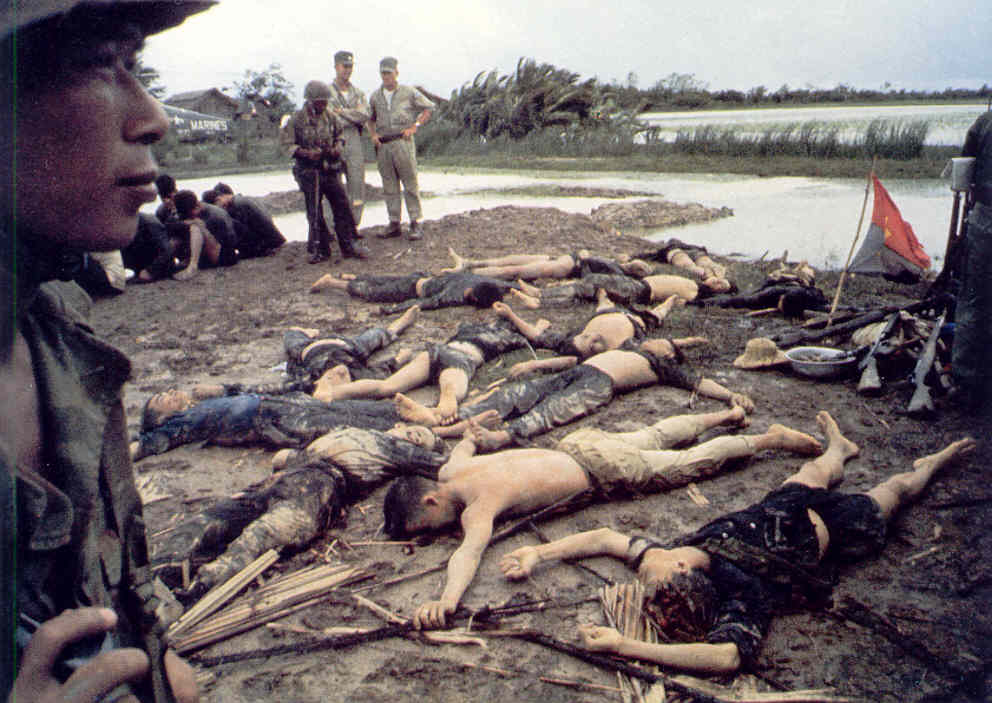 Body count of NLF guerrillas
– 1962 Body count of NLF guerrillas
– 1962
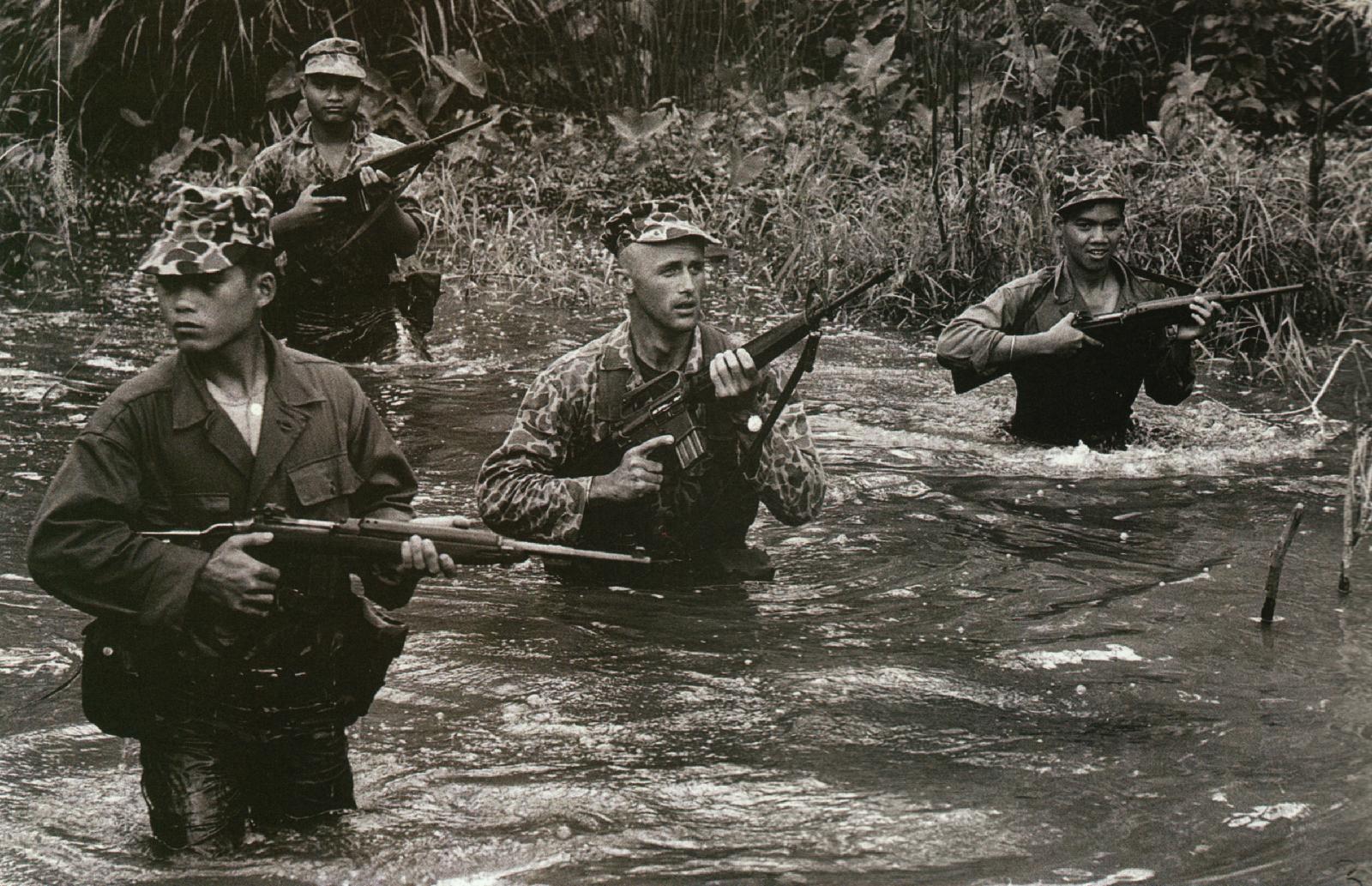
US officer training Montagnard
troops in Vietnam - 1964
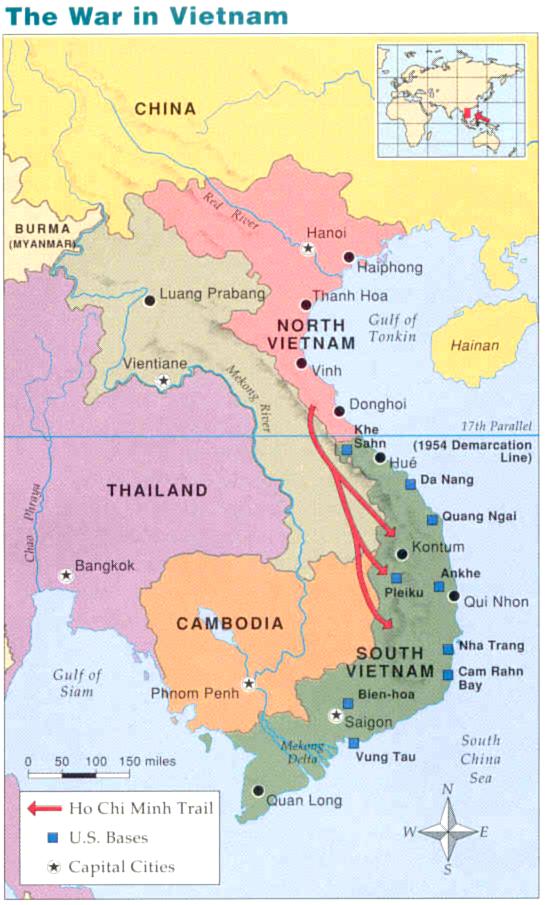
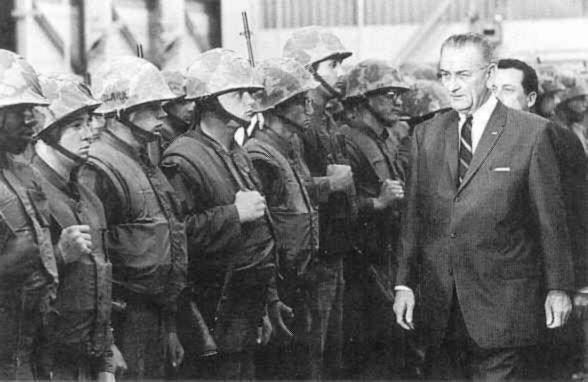 Lyndon Johnson reviewing
American troops
Lyndon Johnson reviewing
American troops
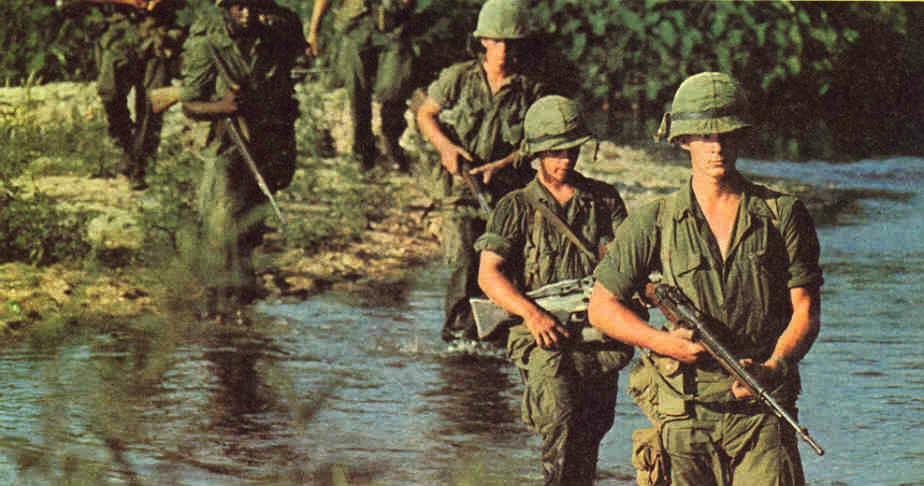
US Marines landing at Khe
Sanh military airbase near the North-South Vietnamese border
 US helicopter and troops
in Vietnam – 1965
US helicopter and troops
in Vietnam – 1965
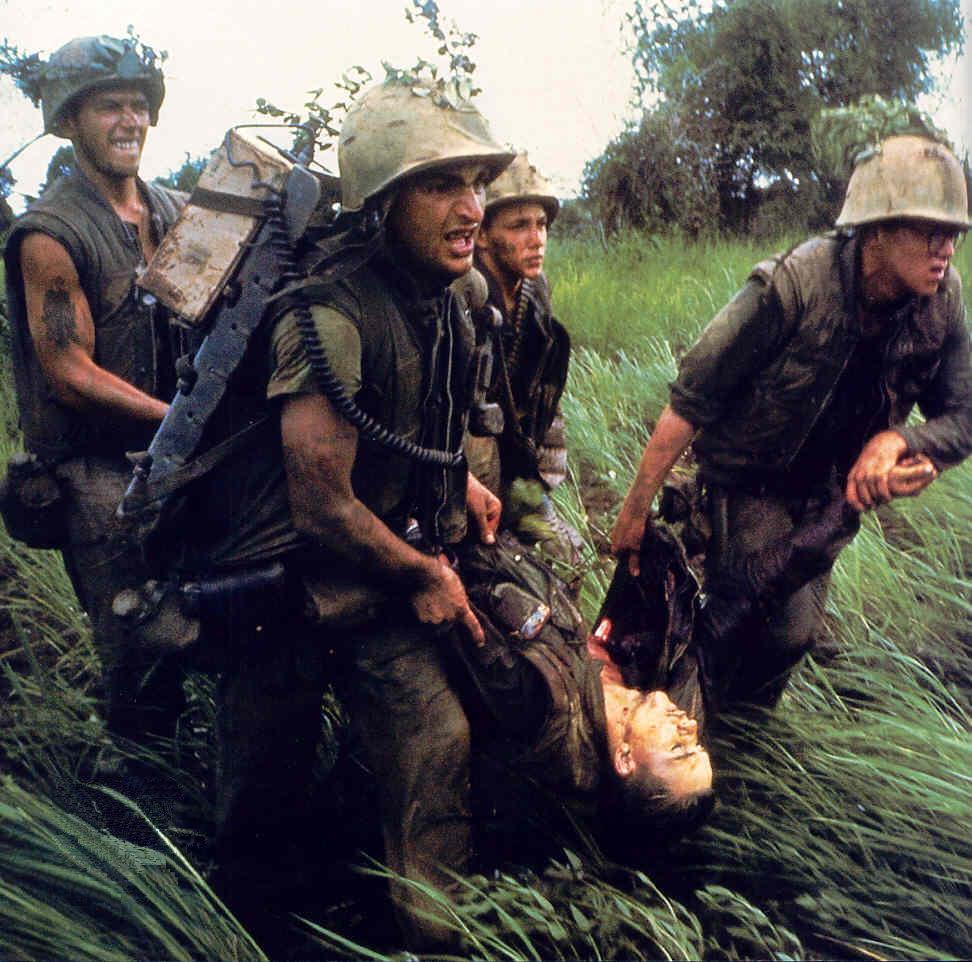
America beginning to realize
that the Vietnam War was not going to be easily winable –
1966
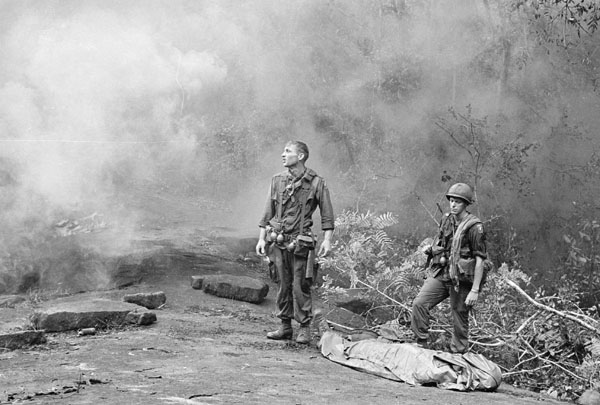
"SP4 Ruediger Richter (Columbus,
Georgia), 4th Bn., 503 Inf., 173 Abn Bde (Separate),lifts his battle weary eyes
to the heavens, as if to ask why? SGT. Daniel E. Spencer Bend, Oregon) stares down
at their fallen comrade. The day's battle ended, they silently await the helicopter
which will evacuate their comrade from the jungle covered hills in Long Khanh
Province."

US Marines on search and
destroy mission in South Vietnam (nearly 550,000 US troops
were in Vietnam by the spring of 1968)
 U.S. artillery in
Vietnam
U.S. artillery in
Vietnam
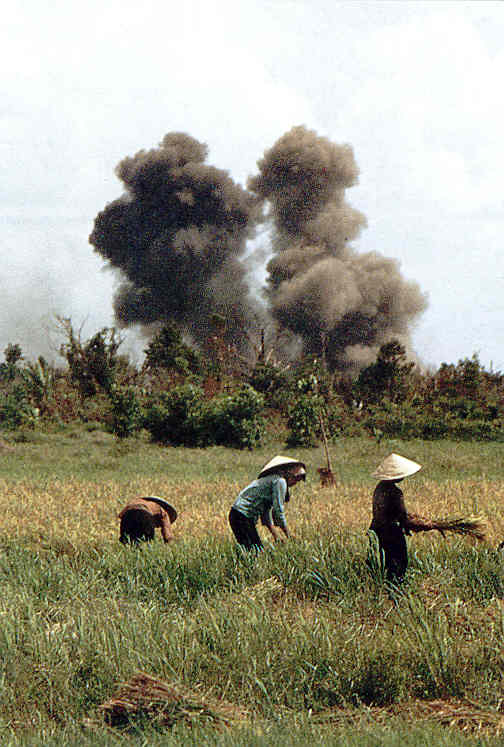
Peasants working in the Mekong
River Delta rice fields while bombs go off nearby
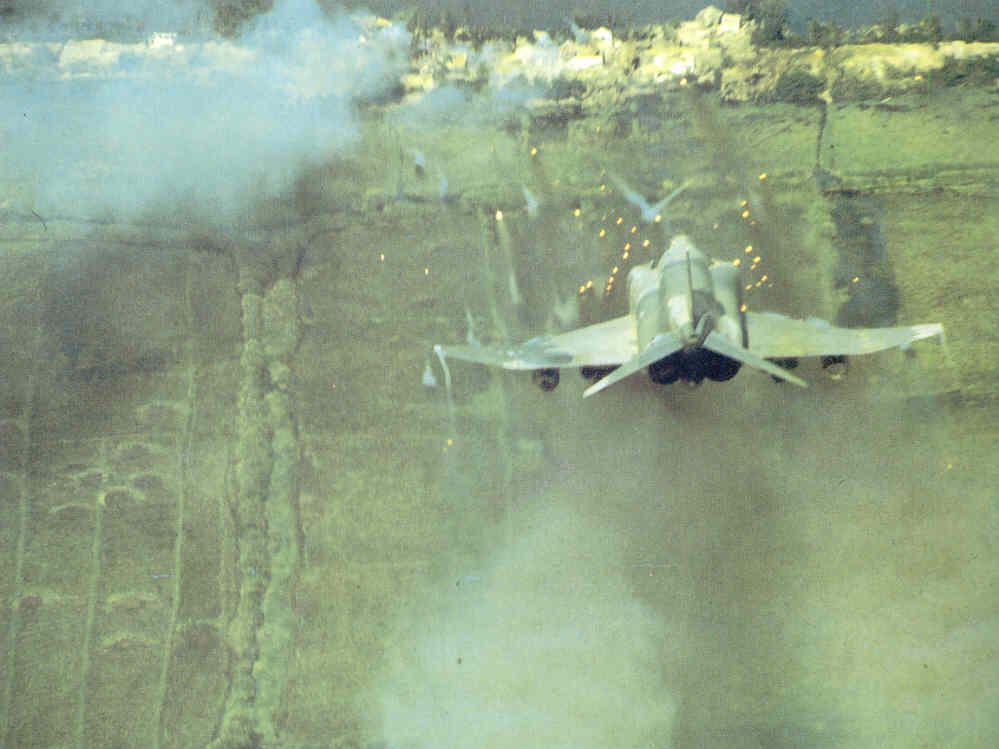
An F-4C Phantom air strike
on a Vietcong-controlled village
(A great way to sell the idea of democracy to the South Vietnamese!)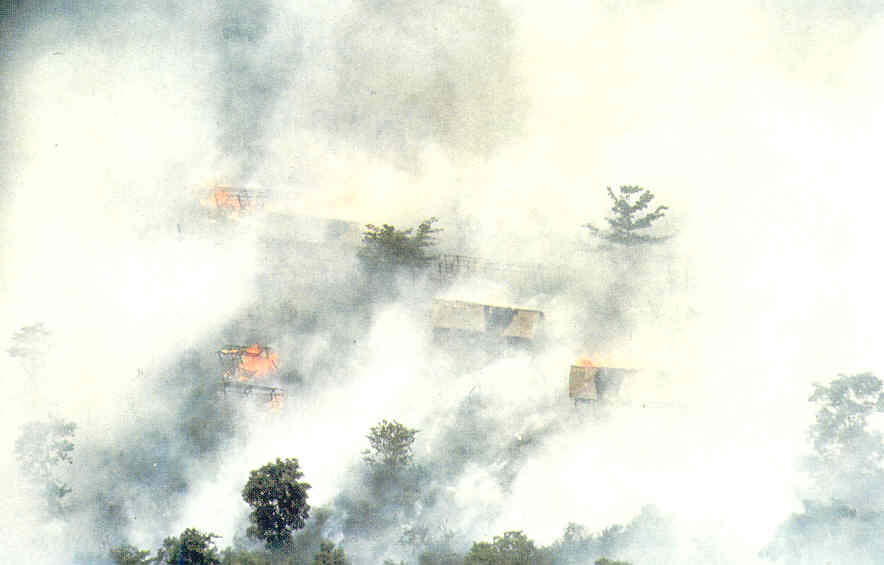 A village after an air
strike
A village after an air
strike
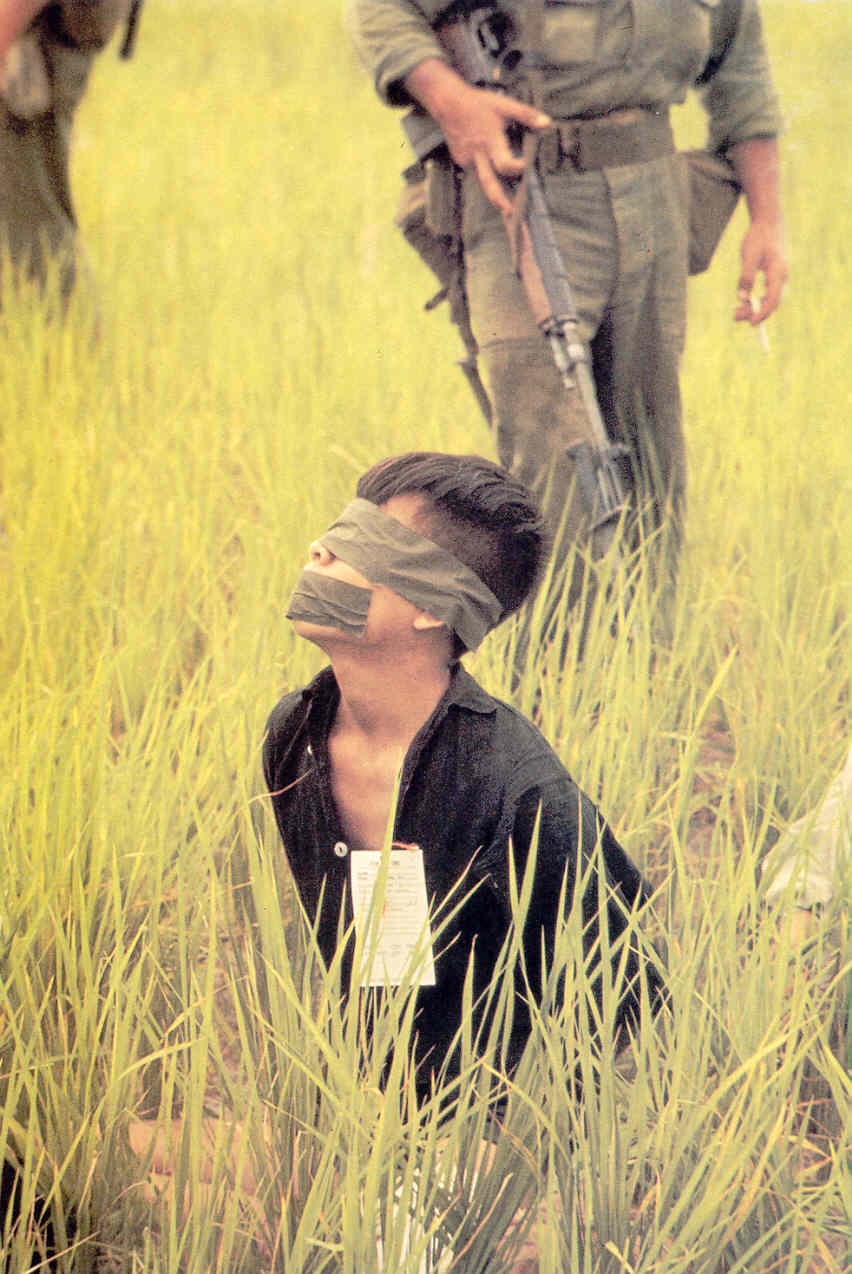
A VC guerrilla captured during
"Operation Piranha" – November 1965
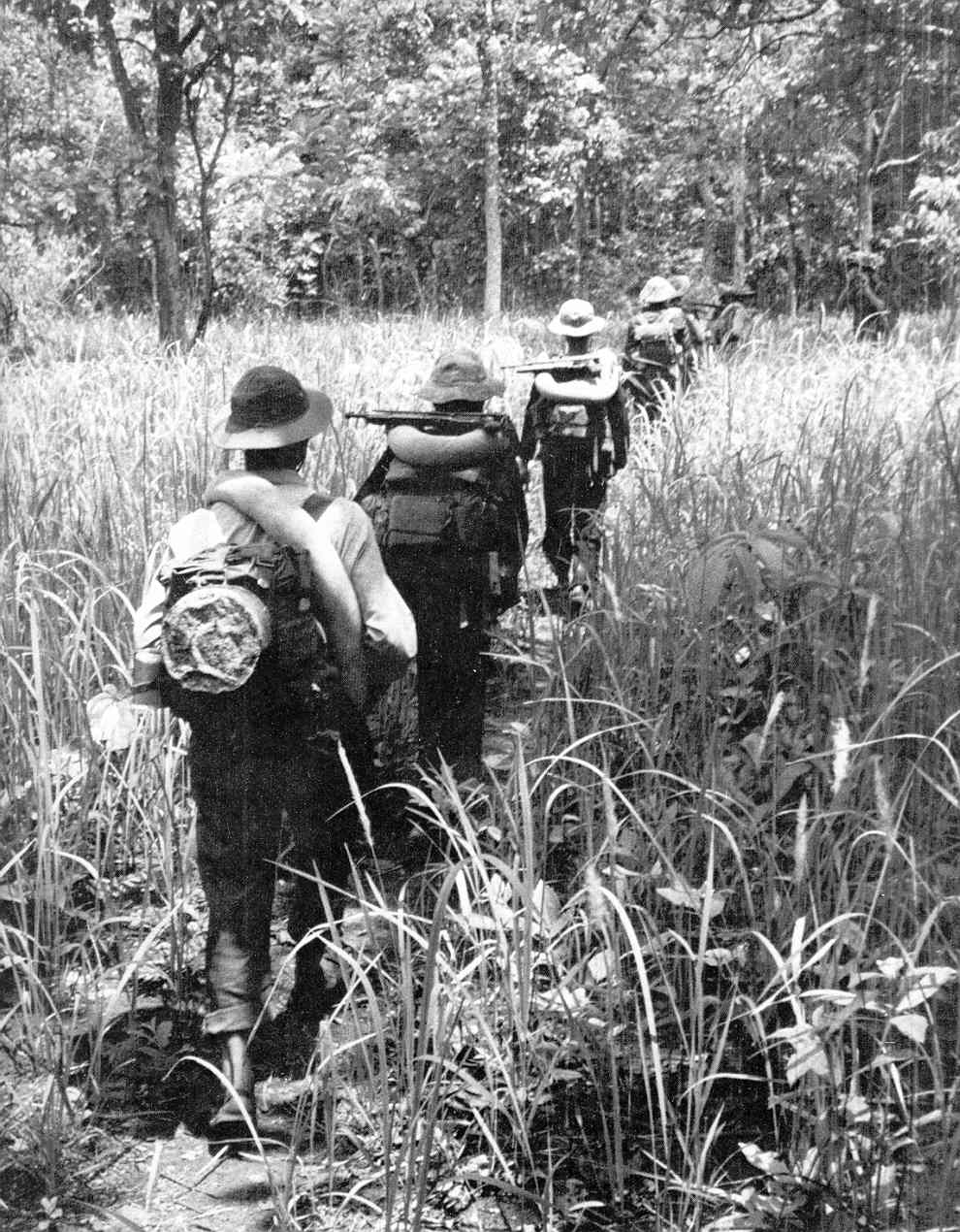
Vietcong on the move –
May
1965
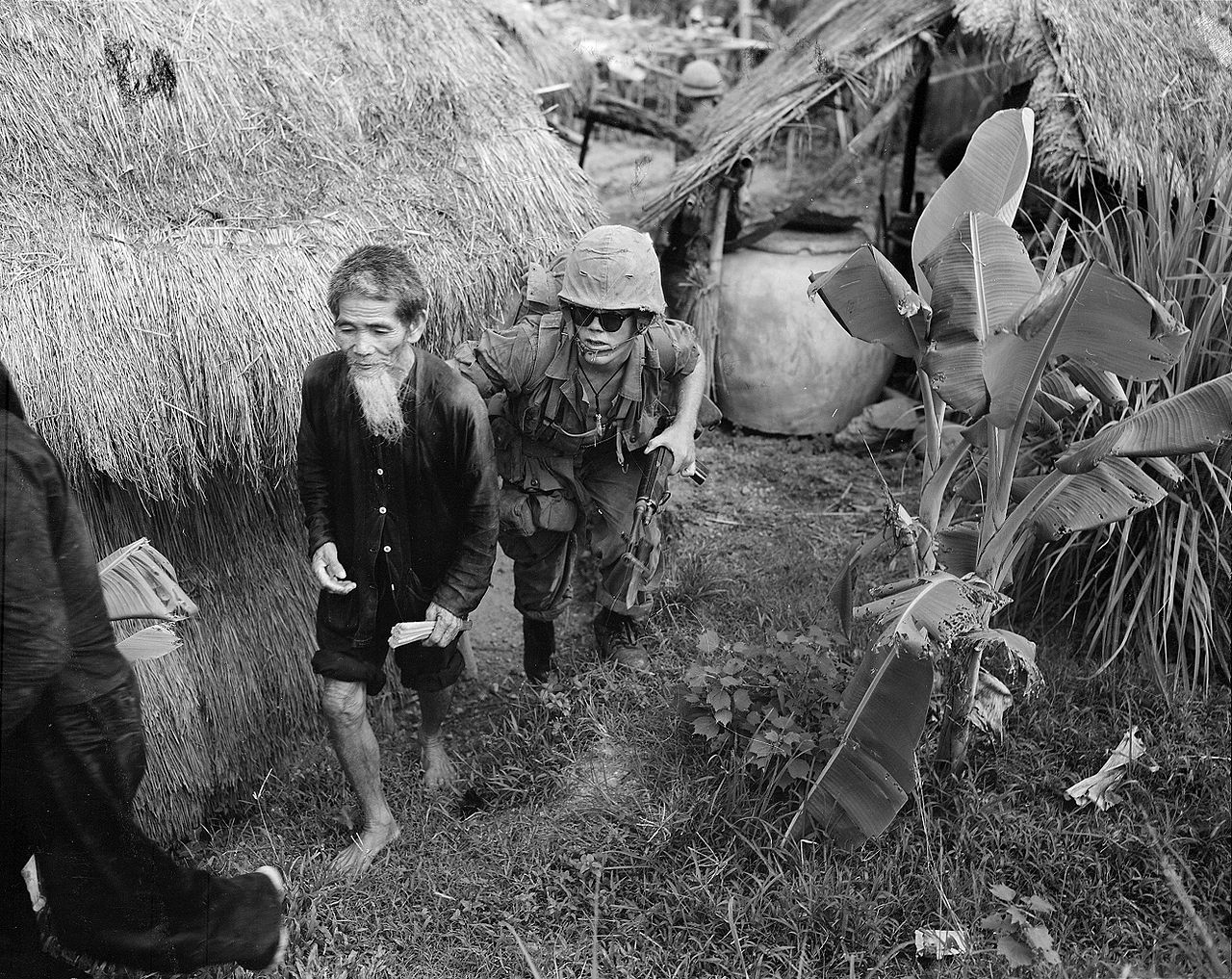
A US Marine moving a Viet Cong suspect to the rear in an
action near the Da Nang Air Base - August 1965
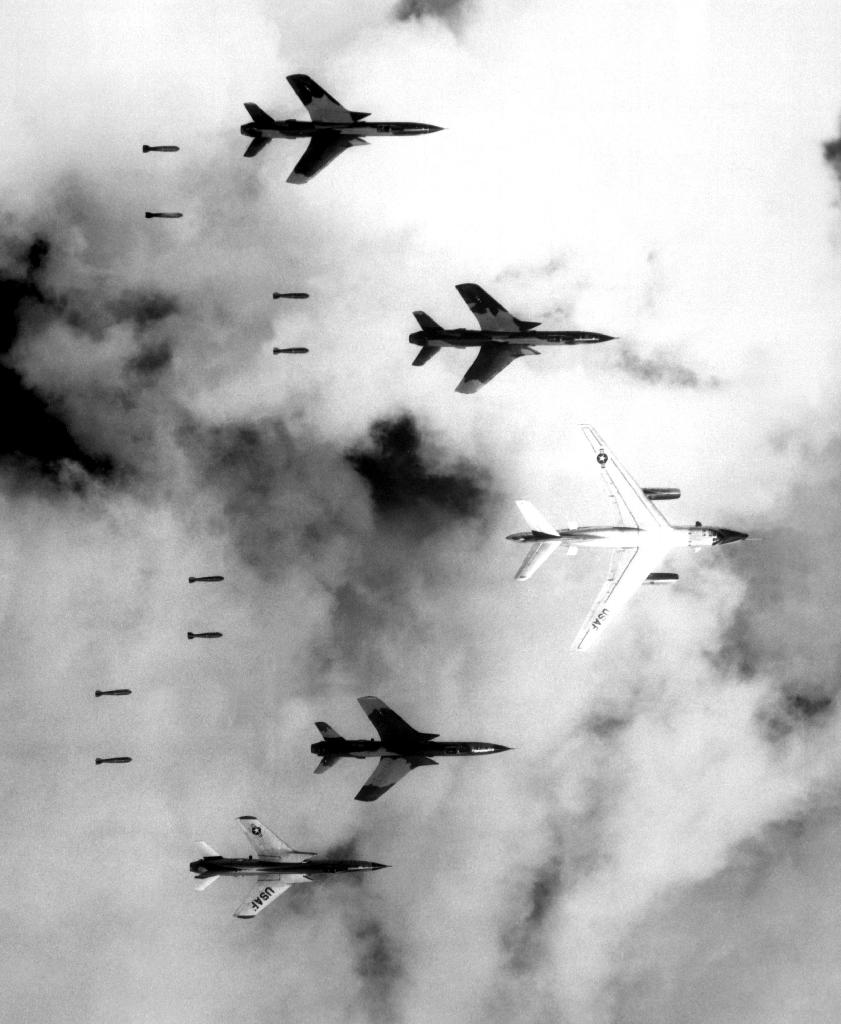
Operation Rolling Thunder
... an attempt to bomb North Vietnam into submission ... begun in March
of 1965 and continued until just before the American presidential elections
in November of
1968
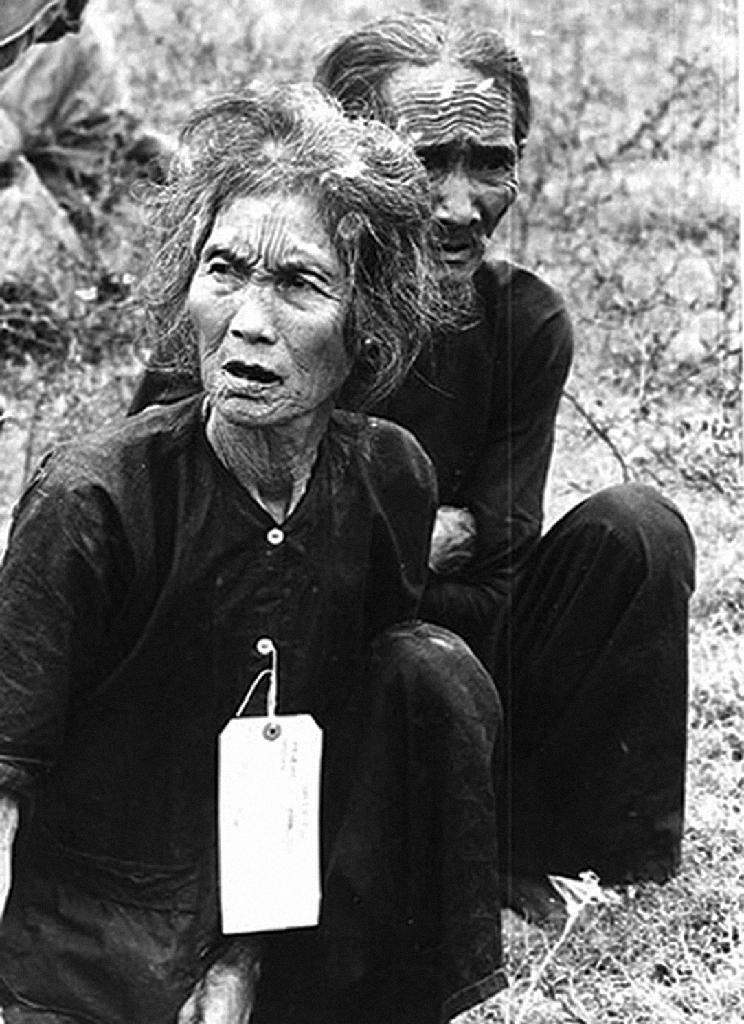
Peasants being held and questioned under suspicion of being
Viet Cong supporters - 1966
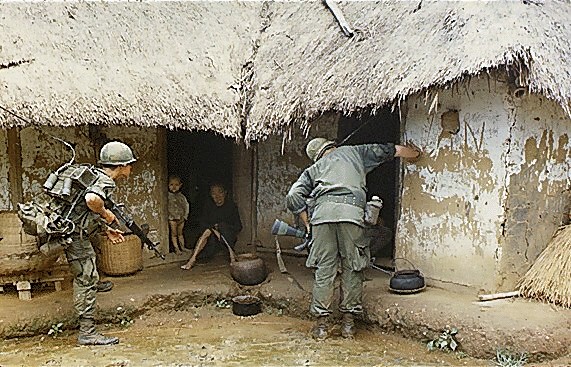
Checking a Vietnamese house in an
anti-VC sweep in October of 1966
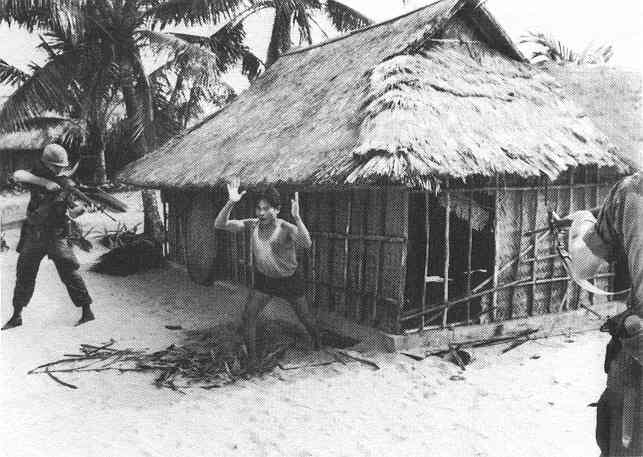
Marines capturing a VC suspect
emerging from a "spider hole" behind this house –
1967
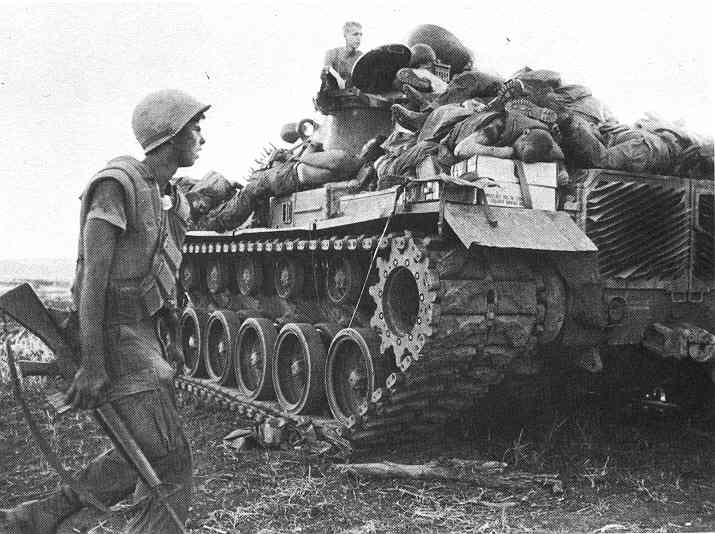
Dead Marines are stacked
on a tank near Con Thien
after hand-to-hand combat
with North Vietnamese regulars – July 1967
But Johnson realizes that he is losing popular support for his Vietnamese program ... and tries to make it look as if he is achieving actual success in the project
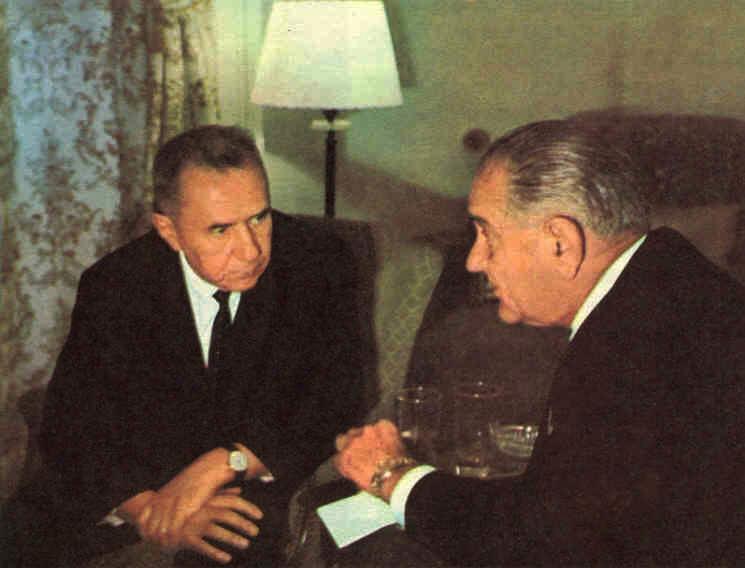
Soviet Premier Aleksei Kosygin
confers with Johnson in Glassboro, New Jersey – June 1967

Official inspection tour
of "progress" in the Vietnam war by US envoys – June 1967. Seen here conferring are
Ambassador Ellsworth Bunker (left), Gen. Maxwell Taylor, Clark Clifford, and Gen.
William Westmoreland
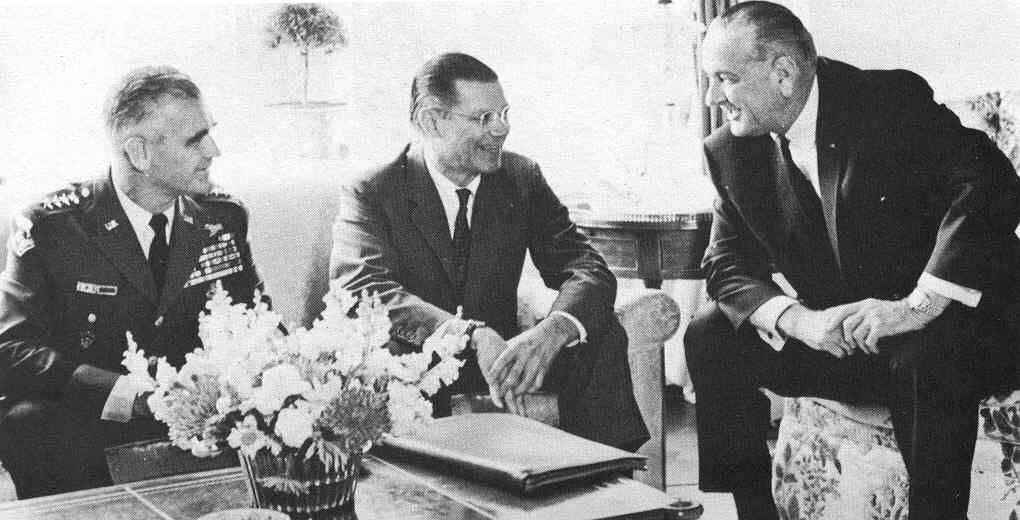
Johnson confers with Gen.
William Westmoreland and Defense Secretary Robert McNamara -
July
1967
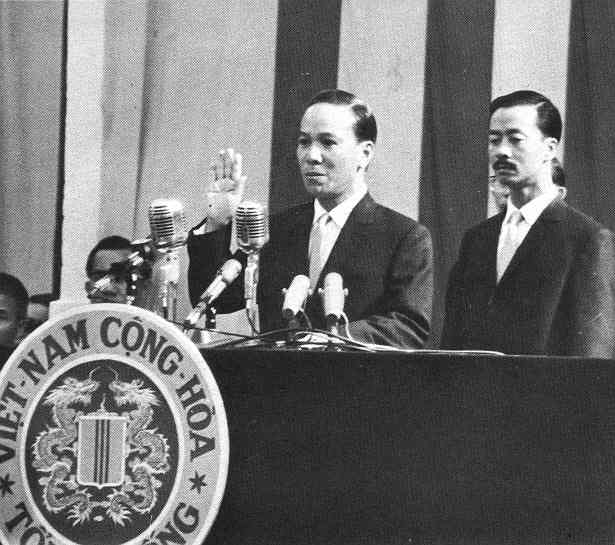
Nguyen Van Thieu sworn in
as S. Vietnamese President; Vice-President Nguyen Cao Ky behind him - October
1967
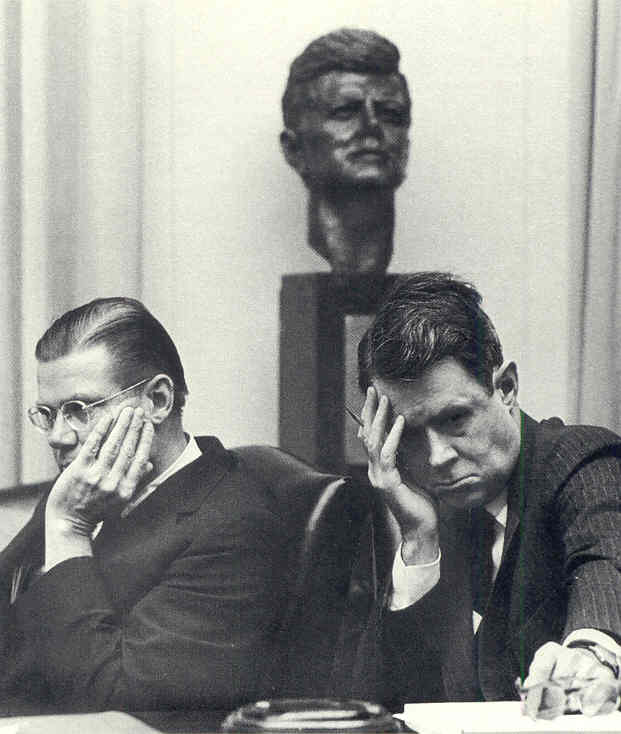
Defense Secretary Robert
McNamara and his Deputy, Cyrus Vance – May 1965 (McNamara, who had become
despondent over the war, left his position in February of 1968 to become
chairman of the World Bank )
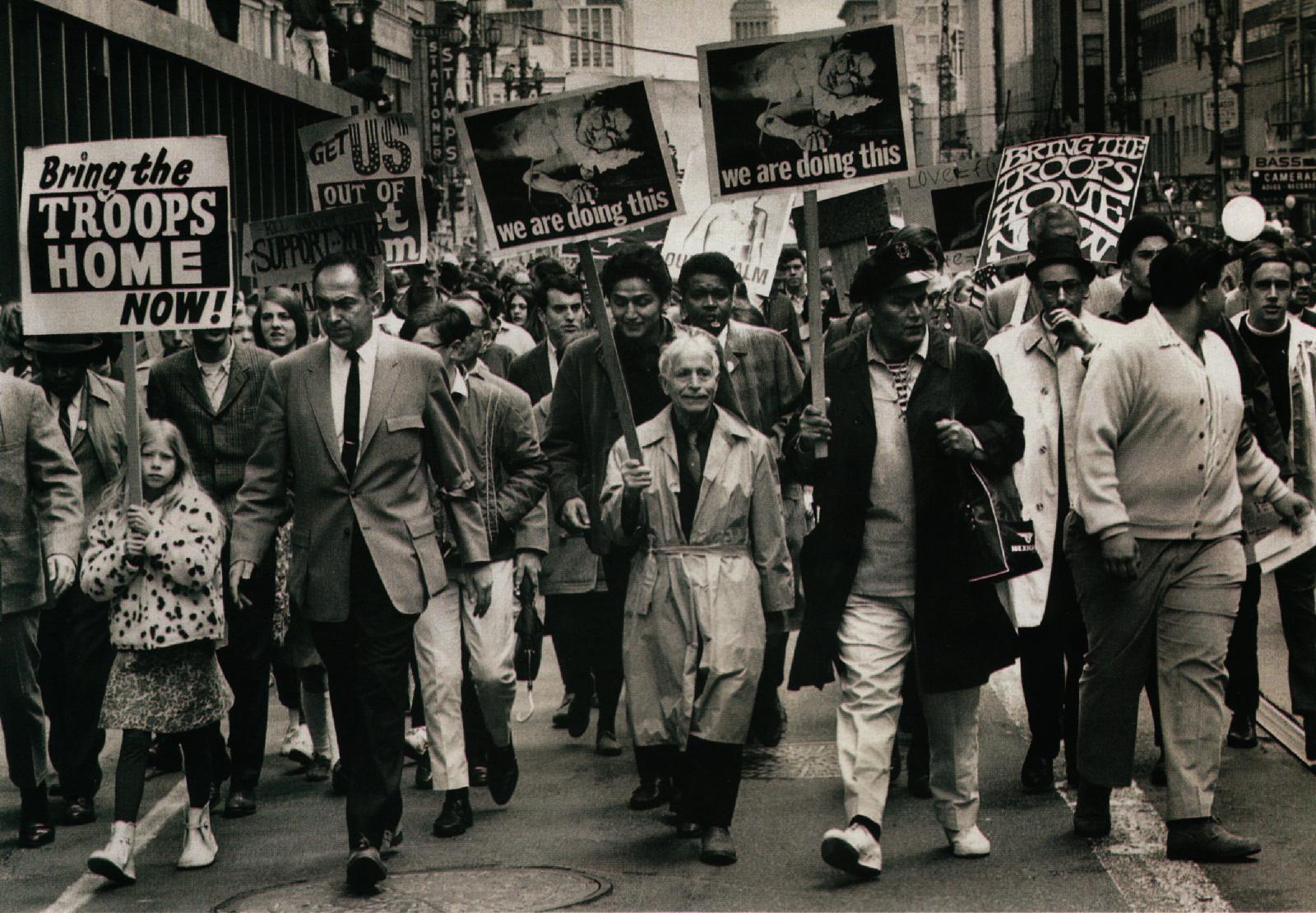
Anti-War demonstration in
San Francisco - April 1967
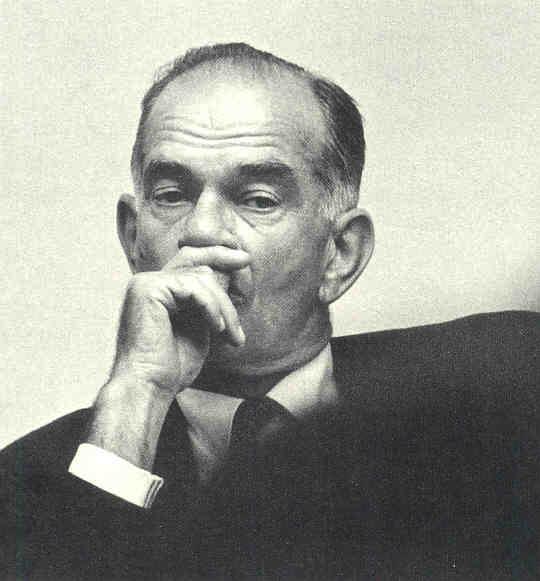
Senator J. William Fulbright
(D-Ark) Chair of the Senate Foreign Relations Committee ... giving the Vietnamese War
a scrutiny which made LBJ very uncomfortable

Go on to the next section: Mao's China
 Miles
H. Hodges Miles
H. Hodges
| | |


 Johnson – the Washington insider
Johnson – the Washington insider
 Johnson's "Great Society" Program
Johnson's "Great Society" Program
 Johnson's "Police Action" in Vietnam to
Johnson's "Police Action" in Vietnam to

















































